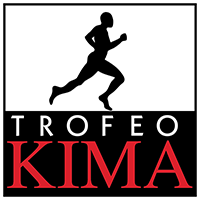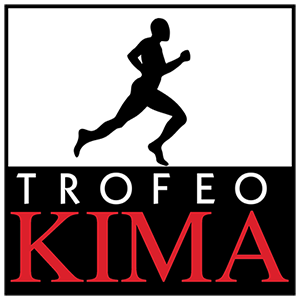Fast and light, but in safety
Safety is paramount at this season’s most technical skyrace. Taking cues from great feats of ski mountaineering and lessons from the hardest off-road running races, the organising committee of the Grande Corsa sul Sentiero Roma have introduced an obligatory kit list for all competitors, which must be retained throughout the race. Kit checks will be carried out at both the start and the finish of the 2018 Trofeo Kima.
The notion of safety doesn’t end there though: in collaboration with the local Sondrio-based company Sete Track, all of the 300 courageous participants at the 2018 event will be given a GPS transmitter to track their whereabouts during the race – and ensure that emergency services can locate them swiftly if needed. With the topic of doing more for safety at the forefront of this year’s event, the use of technology for improving safety will also be up for a public discussion at a roundtable organised by the Associazione Kima and the Regione Lombardia on Saturday 25th August at the Centro Polifunzionale in Filorela, where members of the public and experts within the field are encouraged to attend and partake in the discussion. How vast is the digital divide? What are the limitations to implementing more technological infrastructure in our lives? To what extent can technology be an asset to those who live in or frequent the mountains?
But back to more pressing matters: what’s new about the 2018 edition of Trofeo Kima? On a logistical level, the answer is simple: nothing. As the fifth round of the Migu Run Skyrunner® Extreme Series, the starting list is crammed with the elite of this category, alongside hand-selected athletes who met the criteria for entry. All 300 runners have the opportunity to race on a breathtaking course that is unlike anything else in the world: 52 km in length, 8,400 metres of altitude in total, and seven passes over 2,500 metres (highest pass: Cameraccio at 2,950 m). Bocchetta Roma, Cameraccio, Camerozzo, Barbacan; Alpine passes that are met with awe from those that know, and held in high esteem. However, while strict rules have been introduced due to the technical nature of the course, its altitude profile, and the imperative need for the safety of all involved, these do not come at the detriment to the race’s magnificence. In fact, if you ask anyone, they render it even more spectacular.
GPS tracking in the race
In collaboration with Sete Track, the entire course has been meticulously navigated, with coverage for 80-85%. Grey areas with patchy signals exist, and these are denoted as such. For those following the race online, these grey areas will not affect the tracking. Each athlete will receive their race-ready, active tracker at the kit check, one hour before the race officially begins. The tracker must be handed back at the finish line, but during the race it’ll be a silent running partner for the athletes and a bolster of confirmation for the race organisers to ensure that everything is running smoothly.
Obligatory kit
Kima is not your standard athletics event, and it is even goes beyond the term ‘skyrace’. The Grande Corsa sul Sentiero Roma [The Grand Race on the Sentiero Roma] can be considered a speed-alpinism competition that predominantly takes place above 2,500 metres – hence the decision to implement an obligatory minimum kit list that will be checked at the start and finish. The following items are included: off-road running shoes, socks, three-quarter length running tights or long shorts that finish above the knee worn with calf boosters, gloves, windproof and waterproof jacket*, thermal blanket, t-shirt or technical shirt, race number worn on the chest. The use of poles is not permitted on technical sections. Helmets are advised. Each athlete must have the ability to carry 1 litre of fluid, either in wide-necked bottles or a camel bag with their own cup. The fluid volume will be checked at the pre-start kit check.
(*Technical trail running jackets will be considered valid providing they have a hood and a certifiable waterproof and breathable membrane as denoted on their internal label. Given the unpredictable nature of a high altitude environment, the organisers recommend that the jacket has a water column of 20000 and RET <6 for breathability.)
Cut-off times
Building on experience from previous editions and direct feedback from competitors, the cut-off times have been adapted to ensure the utmost safety for the athletes and the volunteers along the route. The maximum time available to finish the race will be 11 hours. Cut-offs will occur at Bocchetta Roma (3:15’), Rifugio Allievi (6 hours), and Rifugio Gianetti (8 hours).
Times to beat
On the original route, which measured 50 km with 3,800 metres of climbing, the records are held by Mauro Gatto (5h49’10”) and Gloriana Pellissier (7h48’27”). In its recent iteration, the Grand Corsa sul Sentiero Roma is now two kilometres further and significantly tougher. At 52 km with 4,200 metres of climbing, the times to beat were set by Bhim Gurung from Nepal in 6h10’44” and Nuria Picas with 7h36’21”.
The stats
Starting from Filorera (870 m), Val di Predarossa, Rifugio Ponti, Passo Cameraccio, Passo Torrone, Rifugio Allievi-Bonacossa, Passo Averta, Passo Qualido, Passo Camerozzo, Rifugio Gianetti, Passo Barbacan, Rifugio Omio, Bagni di Masino, Piana di Bregolana, San Martino and then onto the finish in Filorera (870m). A distance of 52 km with 4,200 metres of climbing and the same amount in descent, with seven passes above 2,500 metres of altitude, and the highest pass of Cameraccio at 2,950 m, serving as the GPM.

